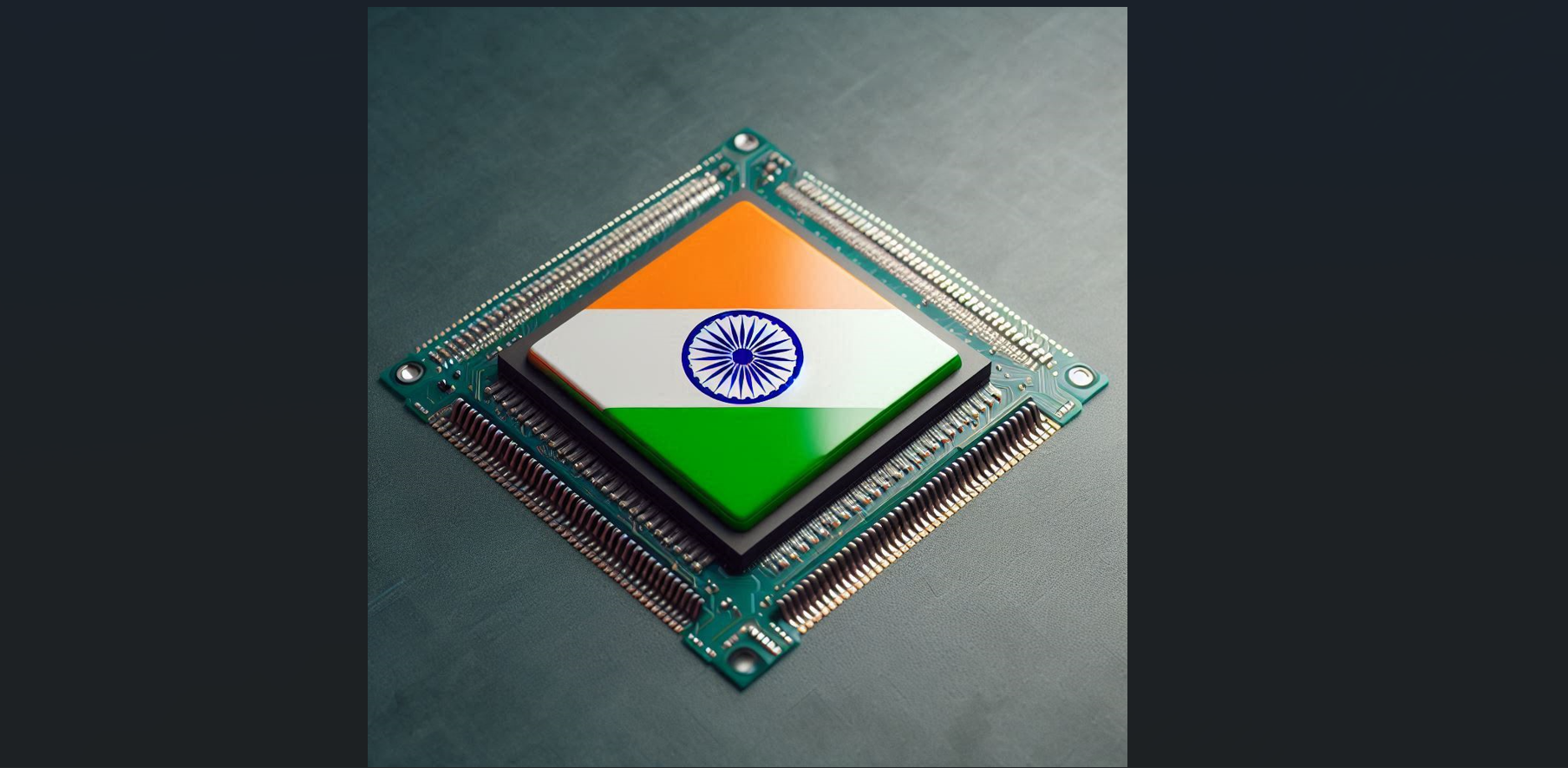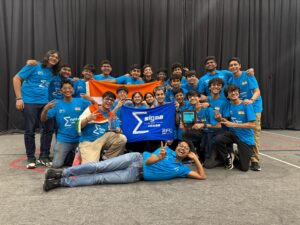While the US and China play tug-of-war with the global chip market, India could sneak into the semiconductor manufacturing game, which is a profitable one. However, China hasn’t really gone out of the game.
India is one of the world’s fastest-growing semiconductor industry hubs. IESA and Counterpoint Research recently reported that India’s semiconductor market is expected to reach $64 billion USD by 2026, which is nearly triple its 2019 size of $22.7 billion USD. The Semiconductor Industry Association wrote in its February 2023 India Semiconductor Sector white paper that the country now accounts for 20% of the total global design workforce.
Read more: As the AI boom ups the semiconductor chip market US & China vie for a greater share
It’s no wonder that chip makers have an eye on India’s capabilities. Together, IESA and SIA announced in January 2023 their plans to jointly build on what India has already accomplished as a major hub for semiconductor research, chip design and equipment engineering, with the goal of unlocking even greater future potential.
In July, Microchip Technology Incorporated announced a multi-year initiative to invest approximately $300 million in expanding its operations in India.
“Microchip is making a significant strategic commitment to growing our operations in India, whose meteoric growth has established it as one of the top sources of business and technical resources in our sector,” said Ganesh Moorthy, President and CEO of Microchip. “Our investments here will enable us to both benefit from and contribute to the country’s increasingly important role in the global semiconductor industry.”
Approximately 2,500 Microchip employees in India are integral to the company’s semiconductor design and development, sales and support, IT infrastructure and application engineering operations. They strengthen corporate initiatives, support 2,000 customers in the region and make valuable contributions across more than 25 business units that develop solutions for industrial, automotive, data center, aerospace and defense, communications and consumer industries.
Microchip’s investments in India over nearly two and a half decades have augmented its headcount growth, resulting in building a center of excellence for engineering deliverables and solutions for Microchip’s global success — Krishna Moorthy, President and CEO of the India Electronics and Semiconductor Association (IESA)
“Microchip’s investments in India over nearly two and a half decades have augmented its headcount growth, resulting in building a center of excellence for engineering deliverables and solutions for Microchip’s global success,” said Krishna Moorthy, President and CEO of the India Electronics and Semiconductor Association (IESA).
Microchip also inaugurated its relocated Hyderabad R&D centre in Hyderabad’s Kokapet business district’s One Golden Mile office tower. It joins two other development centres in Bangalore and Chennai, in addition to sales offices in Bangalore, Chennai, Hyderabad, Pune and New Delhi.
In April, UK-based conglomerate SRAM & MRAM Group announced an investment of INR 2 lakh crore in Odisha to set up a semiconductor unit in the state. An MoU has been signed between IPICOL, the Government of Odisha and SRAM & MRAM Technologies.
Apart from this, the Tata Group announced an investment of INR 27,000 crore in a greenfield facility in Assam for assembly and testing of semiconductor chips for applications across automotive, mobile devices, AI, and other key segments to serve customers globally.
We are in a unique time for the electronics manufacturing market globally and the world is seeking a more secure and resilient electronics supply chain. With our announcement of the semiconductor fab and this strategic project in semiconductor assembly and test, we will be enabling our global customers to base a key part of their semiconductor value chain in India — N Chandrasekaran, Chairman, Tata Son
N Chandrasekaran, Chairman, Tata Sons, said, “We are in a unique time for the electronics manufacturing market globally and the world is seeking a more secure and resilient electronics supply chain. With our announcement of the semiconductor fab and this strategic project in semiconductor assembly and test, we will be enabling our global customers to base a key part of their semiconductor value chain in India. Alongside mitigating global supply chain risks, I am confident that this project will have a transformational impact towards technology led industrialization and job creation in the Northeast in particular.”
India Needs its Own Semiconductors
As 5G rolls out in India, there is a need for the industry to combat the friction points in 5G infrastructure. Domestic semiconductors can reduce the procurement cost of components for telecom companies and achieve low power loss and increased efficiency. With this, India can become the third country in Asia after South Korea and Taiwan to manufacture 5G and 6G components.
Read more: Microchip extends its radiation-tolerant family of gigabit Ethernet
The 5G network is expected to maintain its momentum of growth due to the demand for smart cities and factories, as well as the emergence of fully autonomous vehicles. Until the 5G network infrastructure is in place, it will not be possible to completely deploy the technology and realise its full potential. 5G, cloud data centres, edge computing, IoT, smart cities and autonomous vehicles among others rely on advanced semiconductors.
This is why domestic efforts to foster indigenous semiconductor solutions tailored to India’s burgeoning technological landscape are on.
Companies like Polymatech Electronics, an Indian semiconductor chip manufacturer, are tapping into this demand. The company is investing $1 billion in semiconductor chip manufacturing, aiming to become one of the largest chip manufacturers in Asia by 2025, with a projected revenue of $12 billion by 2030. Specialising in Opto-semiconductors, the company currently fabricates 1 million chips daily at its main manufacturing plant in Kancheepuram, Tamil Nadu. And it is augmenting to manufacture 10 billion chips per annum in CY 2023. Photonics are used in all the technologies that use, produce or modify light.
Two more facilities of Polymatech are being set up to bolster the production capacity. The first plant at Oragadam, Kancheepuram, Tamil Nadu has a state-of-the-art facility, equipped with machinery imported from Japan and the adoption of a full-fledged Industry 4.0 theme. The company is also working on forward and backward integration of current products and localisation of products that are manufactured.
We are leveraging our expertise in Sapphire-based GaN Semicon chips to produce semiconductor components for 5G and 6G applications to achieve low power loss, efficient signal isolation and reliable functionality — Eswara Rao Nandam, Founding President of Polymatech
Eswara Rao Nandam, Founding President of Polymatech said “We are leveraging our expertise in Sapphire-based GaN Semicon chips to produce semiconductor components for 5G and 6G applications to achieve low power loss, efficient signal isolation and reliable functionality. With Polymatech’s homegrown technology and experience in LTCC and HTCC packaging, it is possible to create miniaturised communications and sensor modules operating at very high frequencies, as well as photonics modules with low resistance, faster switching speed, quick reverse recovery and low loss optical interfaces. Though the technology is developed in-house by Polymatech scientists, we are in an advanced stage of discussions with industry experts from Europe to reduce the testing time cycles for high reliability and adherence to European Union standards.”
In March, SmartSoC Solutions, an Indian semiconductor design services company, joined the Design Center Alliance (DCA) of TSMC’s Open Innovation Platform® (OIP).
But China is still quite ahead in this market. American chip makers like Qualcomm and Nvidia continue to double down on the Chinese market. Such developments can deter the growth happening in the semiconductor industry in India, so that the country will have to work harder at attracting foreign buyers.
We have a critical window of opportunity where we see tremendous customer pull from global players for manufacturing in India and we plan to capitalize on this opportunity and leapfrog through technology innovation. This investment will go a long way in putting India on the map of global semiconductor manufacturing and in spurring a complete domestic ecosystem for high technology manufacturing while being an enabler for the indigenous product ecosystem — Dr Randhir Thakur, CEO & MD, Tata Electronics
During the semiconductor assembly and test facility announcement in Assam, Dr Randhir Thakur, CEO & MD, Tata Electronics said, “The strategy of serving across the semiconductor value chain is our differentiator and will enable Tata Electronics to deliver complete system offerings to customers. We have a critical window of opportunity where we see tremendous customer pull from global players for manufacturing in India and we plan to capitalize on this opportunity and leapfrog through technology innovation. This investment will go a long way in putting India on the map of global semiconductor manufacturing and in spurring a complete domestic ecosystem for high technology manufacturing while being an enabler for the indigenous product ecosystem.”
While India is aiming to cash in on being an alternative semiconductor facility, the “critical window of opportunity” might not be as wide open as we think.












